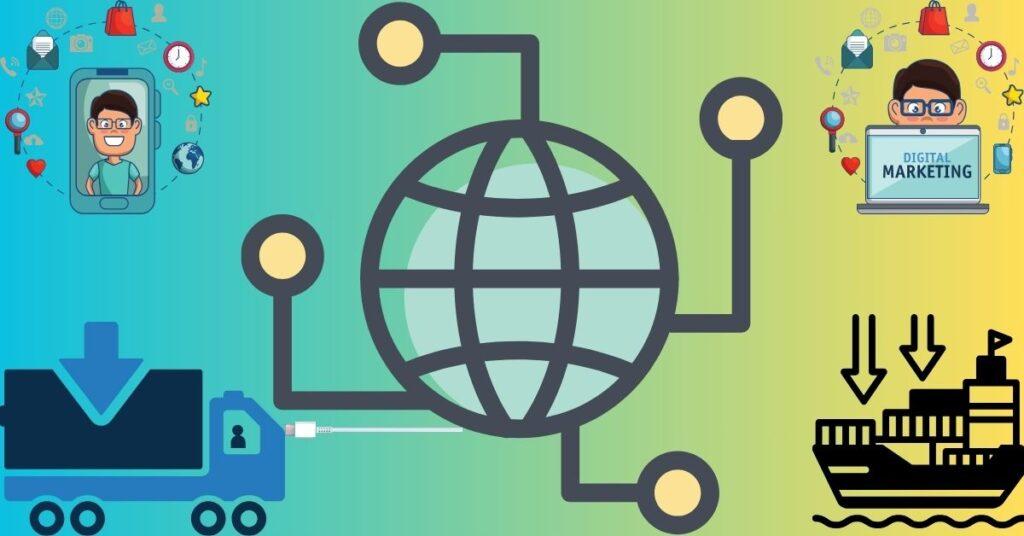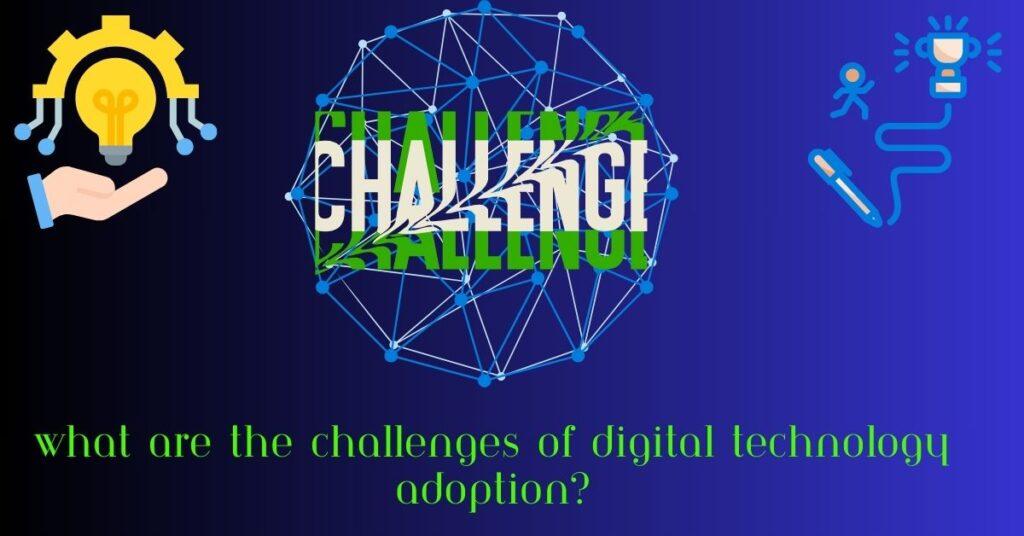Introduction
Digital technology has turned out to be an imperative part of our lives, revolutionizing the way we paint, talk, and access information. With the speedy improvements in technology, it could be overwhelming to choose the right virtual equipment for your commercial enterprise. However, investing in the right virtual technology is crucial for companies to stay resilient, green, and value-effective.
In this comprehensive guide, we will explore the idea of digital technology, its various sorts, significance for organizations, benefits, challenges, and the destiny of the digital era. Let’s dive in!
What is Digital Technology
Digital generation refers to using electronic tools, devices, systems, and assets that agencies utilize to procedure, save, and transmit data. It incorporates a wide range of technologies that have transformed the way we carry out tasks and engage with the digital international.
Examples of the virtual era include private computer systems, smartphones, virtual cameras, cloud platforms (e.g., Microsoft 365, Google Docs), and diverse software program packages. This technology leverages rapid data transmission speeds and performs the use of virtual signals.
Digital technology plays a crucial role in improving worker productiveness and performance inside agencies. Automating methods and simplifying duties, lets personnel focus on higher-level functions that require human creativity and trouble-fixing.
The Different Types of Digital Technology
The Different Types of Digital Technology
There are several types of digital technology available these days, each serving one-of-a-kind purposes and industries. Let’s explore a number of the most applicable forms of virtual era for agencies:
Business Technology
This class includes records technology, digital advertising, facts control, and e-commerce tech. It enables organizations to elevate their operations and gain an aggressive side.
Information Technology (IT)
IT encompasses both hardware and software, in conjunction with telecommunications. It enables groups to store, ship, and retrieve statistics effectively.
Communication Technology
This kind of technology makes a specialty of digital communication networks for customers and gadgets. It includes virtual assistants, social media systems, Wi-Fi networks, and Bluetooth technologies.
Operational Technology (OT)
OT combines hardware and software to stabilize business networks. It is vital for industries along with manufacturing, strength, and transportation.
Adaptive AI (Artificial Intelligence) / Superintelligence
AI-based total technology, like chatbots, digital sellers, and self-riding motors, beautify automation and selection-making procedures.
Educational Technology (EdTech)
EdTech has revolutionized gaining knowledge by imparting computer-based practice, interactive learning tools, and online sources for students.
Blockchain Technology
Blockchain gives a stable, decentralized machine for coping with digital belongings and transactions. Its packages expand past finance and encompass online inventory exchanges and social media structures.
These are only some examples of virtual technology that corporations can leverage to optimize their operations and promote innovation and increase. Assessing your enterprise tech stack and figuring out areas in which new technology can fill gaps is essential for staying beforehand inside the virtual age.
Why is Digital Technology Important for Business?
Why is Digital Technology Important for Business?
In today’s virtual era, organizations closely rely upon technology to streamline operations, improve productiveness, and enhance patron enjoyment. Here are some key reasons why digital technology is vital for commercial enterprise achievement:
1. Streamlined Operations
Digital generation enables agencies to automate manual approaches, lowering human mistakes and saving time. Tasks that have been once finished manually can now be efficaciously treated by using software program programs. This streamlines operations, increases efficiency, and frees up employees to attention to better-fee duties.
2. Enhanced Productivity
By leveraging the virtual era, organizations can considerably improve employee productivity. Tools like assignment management software programs, collaboration platforms, and conversation gear facilitate seamless teamwork, irrespective of geographical location. These technologies permit employees to work extra successfully and collaborate effectively.
3. Improved Customer Experience
Digital technology has changed the manner companies interact with their customers. From online buying to customer support chatbots, generation gives comfort and customized experiences. Businesses can use consumer information to tailor their services or products, anticipate desires, and deliver higher customer experiences.
4. Competitive Edge
Staying ahead of the opposition is essential for business increase and sustainability. Technology affords companies with an aggressive edge by enabling them to expand innovative services or products and deliver them faster and at decreased expenses. By embracing the era, corporations can outperform their competition and live applicable in a modern dynamic market.
5. Cost Efficiency
Digital technology can assist companies lessen expenses with the aid of streamlining processes, automating duties, and optimizing resource allocation. For instance, cloud-primarily based solutions take away the need for pricey hardware and protection fees. By leveraging value-effective era answers, organizations can allocate sources extra effectively and attain better profitability.
6. Quick Response to Market Needs
Technology permits companies to reply quickly to market changes and customer needs. With real-time statistics analytics and marketplace insights, businesses can pick out traits, anticipate shifts, and adapt their techniques as a consequence. This agility is critical in a cutting-edge fast-paced enterprise landscape.
With these benefits in thoughts, it’s no surprise that businesses are increasingly investing in new technology to benefit a competitive facet and force growth. However, adopting digital generation comes with its very own set of challenges.
What Are The Challenges of Digital Technology Adoption?
What Are The Challenges of Digital Technology Adoption?
While the digital era offers numerous advantages, there are demanding situations that companies may additionally face through the adoption manner. Let’s explore the pinnacle 3 challenges and their ability answers:
Challenge 1: Employee Resistance to Change
One of the primary challenges companies face is employee resistance to trade. Humans are resistant to change, and introducing new technology can disrupt acquainted workflows and routines. Overcoming this resistance is important for a hit virtual technology adoption.
Solution: Communicate a transparent exchange management plan
To address worker resistance, corporations have to communicate a clean change control plan. This plan must define the rationale for enforcing modifications, contain employees within the transition procedure, and provide support and education. Linking digital adoption desires with organizational objectives will help personnel recognize the collective advantages of embracing new technology.
Challenge 2: Complexity of Technology
The complexity of the latest virtual technology may be overwhelming for employees. If they were conversant in using positive tools or techniques for years, transitioning to new technologies may be hard.
Solution: Use a Digital Adoption Platform (DAP) tailor-made to a man or woman’s desires
A Digital Adoption Platform (DAP) can simplify the adoption manner with the aid of imparting step-with the aid of-step steerage tailor-made to male or woman customers’ desires. By providing precise commands and complete help, a DAP can raise employees’ self-belief and help them navigate the complexities of the latest technologies efficiently.
Challenge 3: Monitoring Employee Adoption Rates
Tracking and measuring the adoption rates of new technology is crucial to make certain a hit implementation. Without proper monitoring, agencies may additionally conflict to discover regions wherein employees have become caught or lacking essential guidance.
Solution: Utilize tools to tune and degree technology adoption
To conquer this challenge, groups can hire gear that song and degree technology adoption. By reading usage metrics, organizations can discover regions that require improvement and provide focused help. Specialized knowledge-based totally software programs with distinct utilization analytics can simplify the tracking method and ensure the entire adoption of digital technology
By addressing those demanding situations and implementing the proper strategies, companies can efficiently undertake the virtual era and achieve its blessings.
The Future of Digital Technology
The virtual generation landscape is continuously evolving, and companies should adapt to live in advance. Let’s discover some rising technology on the way to form the future:
Neuromorphic Computing
Neuromorphic computing systems allow the improvement of merchandise with advanced AI abilities. These AI structures can analyze the herbal international, understand styles, and make quick and accurate decisions. We can expect to look at a wide range of products leveraging neuromorphic computing within the coming years.
Human-Centered AI
Human-Centered Artificial Intelligence (HCAI) focuses on making sure AI operates ethically and responsibly, with human oversight. While AI can work autonomously, it nonetheless requires human intervention to ensure ethical selection. HCAI combines the power of AI with humans not unusual feelings and values.
Self-Supervised Learning
Self-supervised mastering allows AI structures to infer connections among distinctive record factors. This enables AI to become aware of patterns, expect future events, and make more correct choices. While self-supervised learning remains rising, it indicates splendid ability in natural language processing and computer vision packages.
These are just a few examples of the future of virtual generation. As the era continues to strengthen, groups must constantly evaluate their techniques, operations, and infrastructure to stay resilient and embody emerging technologies that satisfy their changing desires.
FAQs FOR What Is Digital Technology?
-
What is virtual technology?
Digital generation refers to the usage of digital gadgets and laptop systems to method, save, and transmit records in a digital format, which includes binary code (0s and 1s).
-
How does digital technology vary from the analog era?
Analog generation uses non-stop signals to represent facts, while the digital era uses discrete values. Digital technology is more precise and permits for less difficult garage and manipulation of records.
-
What are some unusual examples of digital generation?
Common examples include smartphones, computer systems, capsules, virtual cameras, e-readers, and smartwatches. Additionally, software packages and the net are important additives of the virtual era.
-
What is the importance of virtual technology in our everyday lives?
The digital era has revolutionized various components of our lives, from verbal exchange and amusement to paintings and training. It has made information more reachable, advanced productivity, and more suitable connectivity.
-
How does the virtual era affect industries and businesses?
Digital technology has transformed industries with the aid of automation, records evaluation, and faraway operations. It has also created new enterprise fashions, which include e-trade and digital advertising.
-
What is the function of synthetic intelligence (AI) in digital technology?
AI is a subset of a digital generation that involves growing clever structures capable of acting on responsibilities that generally require human intelligence, such as trouble-fixing, speech reputation, and photograph analysis.
-
Is cybersecurity vital within the context of a virtual era?
Yes, cybersecurity is critical in safeguarding virtual systems and facts from cyber
Conclusion
Digital technology has emerged as an indispensable part of current businesses. It gives several benefits, which include streamlined operations, enhanced productivity, advanced purchaser reports, and an aggressive area. However, businesses must conquer challenges together with employee resistance and complexity to effectively adopt virtual generation.
By investing in the right digital tools, companies can optimize performance, lessen costs, and drive a boom. Looking ahead, emerging technologies like neuromorphic computing and human-centered AI will form the future of the digital era.
To stay ahead in the digital age, agencies ought to be inclined to include trade, adapt to emerging technologies, and constantly innovate. By leveraging virtual generation efficiently, groups can reach new heights and reap lengthy-time period achievement in the present-day dynamic and aggressive marketplace.


